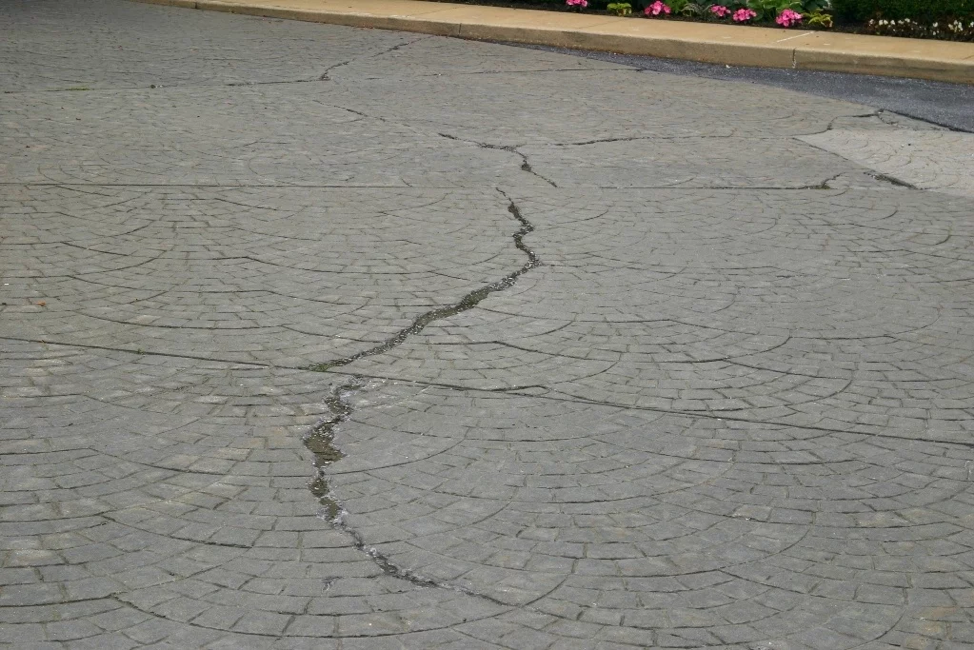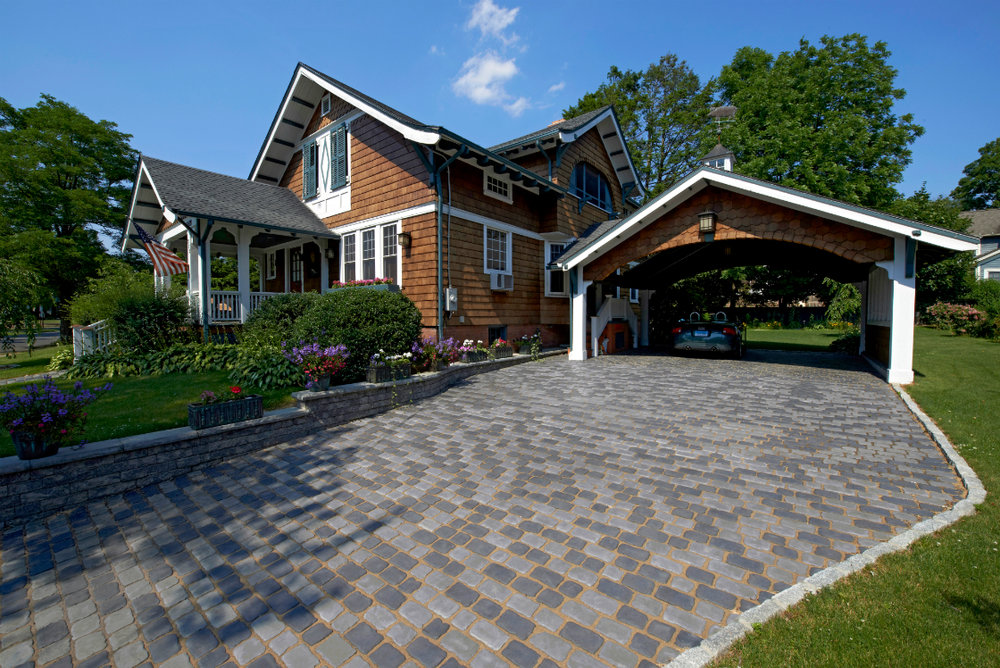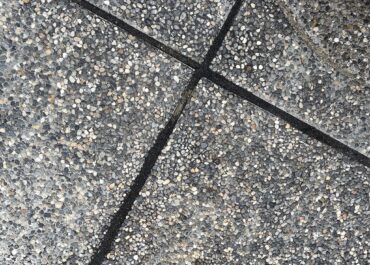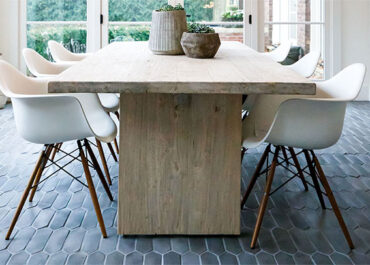
Stamped concrete vs pavers – ever since the inception of paving stones on the market, which made them vastly accessible to the general public, this has been a staple question on many people’s minds. When you think about conceiving a new driveway or front yard, several possibilities turn up, and concrete is the leading contestant as a material. What is the best investment you can make, though?
Well, keep reading the article to compare both products. Hopefully, by the end, you’ll be able to determine which suits your needs the most.
Read as well: Is it possible to install pavers over a concrete patio?
Stamped Concrete vs Pavers
As a paving material, concrete has emerged as a preferred option for urban paving settings due to its durability, versatility, and aesthetic appeal. When it comes to choosing between stamped concrete and pavers, both options have their merits.
However, as we’ll see, concrete pavers offer a range of advantages that make them a superior choice overall. Below, we’ve listed the main points to justify this fact, highlighting the cost-benefit of both products.

In Strength (with pound-force per square inch)
Concrete pavers exhibit exceptional strength, making them an ideal choice for various applications. The interlocking nature of pavers creates a robust surface that can withstand heavy loads and resist cracking under pressure, which is an excellent option for high-traffic areas of residences and commercial buildings alike. On top of a well-compacted sand base and sealed joints, these pavers are around 8,000 PSI.
Unlike pavers, stamped concrete is always prone to developing cracks over time, cutting its lifespan short when you consider the harsh weather conditions of some specific areas. Freeze-thaw cycles, for instance, take a lot longer here. Poured concrete is typically around 3,000-4,000 PSI.
In Design Versatility
Listen: one of the significant advantages of concrete pavers over stamped concrete is their unmatched design versatility. As you may imagine, pavers come in a wide array of shapes, colors, textures, and sizes, allowing for endless possibilities that match any style. Whether you desire a traditional, contemporary, or custom look, pavers can be easily arranged to create intricate patterns, unique designs, and seamless transitions.
Versatility grants designers and homeowners the freedom to create visually stunning and personalized outdoor spaces that reflect their style and preferences. This is what poured concrete lacks – given how easily its colored layer fades over time. Not only is it plain and as simple as hardscape can get but also hard to complement your desired aesthetic, even when you try.
In Maintenance
Pavers require minimal maintenance compared to stamped concrete surfaces. In the event of damage, for instance, individual pavers can be replaced without affecting the rest of the pavement. Stains and spills can be easily addressed by removing and replacing the affected pavers. Additionally, the jointing sand between pavers helps prevent weed growth and allows for efficient water drainage, reducing the chances of water-related issues such as puddling or erosion. Sealing, however, is an obligatory practice to extend the bright and durable nature of your floor, given how porous concrete is.
Read all about paver maintenance in this article.
Stamped concrete is another story. You see, the strategy of paving a whole surface with a single slab of the hardened solution makes it impossible to replace single spots when needed. And damaged spots will be a recurring thing – be it in hot or cold states, your project will be vulnerable to darker and faded hues, which you can prevent by regularly cleaning the floor, and eventual cracks.

In Cost
While the initial cost of stamped concrete may be lower than concrete pavers, the long-term cost-effectiveness of pavers becomes evident over time. As mentioned, pavers’ durability and ease of repair translate into reduced maintenance expenses in the long run. Furthermore, the option to replace individual pavers, rather than the entire surface, provides significant cost savings in case of localized damage.
Concrete pavers usually range around $10 to $20 per square foot, whereas poured concrete costs $8 to $18 on average.
Don’t miss: Porcelain Pavers vs Concrete Pavers
In Installation
Finally, let’s talk about manual labor – probably the only factor where poured concrete takes the cake.
The installation process of any paving stone can be complex and time-consuming. Expertise is key – as you can read in this article, preparing the ground for a paver installation takes different materials and calculations. That said, in contrast to their counterpart, pavers are laid on a compacted base, and their interlocking design ensures stability and structural integrity. The longer installation time does not save labor costs but allows for quicker access to the paved area.
Nevertheless, stamped concrete is not perfect. Even though it doesn’t require the same expert services, its installation process still takes meticulous pouring, stamping, and coloring, along with the curing time. It all depends on the intricacies of your dream project – so keep that in mind when planning everything out. If you have some budget and time to save, go for pavers by any means, even if you must contact a professional hardscape worker to do it.
And speaking of hardscape pros…
Get an unlimited supply with Eagle Pavers!
So, have we answered your question? In the debate of stamped concrete vs pavers, the latter gets the victory in any scenario. As professionals in the business for years, trust us in this.
As a branch of Eagle Stones, our team specializes in paver supply and installation around the county of Sarasota and Manatee, Florida. In case you’re near us, don’t hesitate to give us a call so we can get started on your concrete project with a free estimate!
Click here to view the full online catalog – we’ll be waiting for you to reach out.




